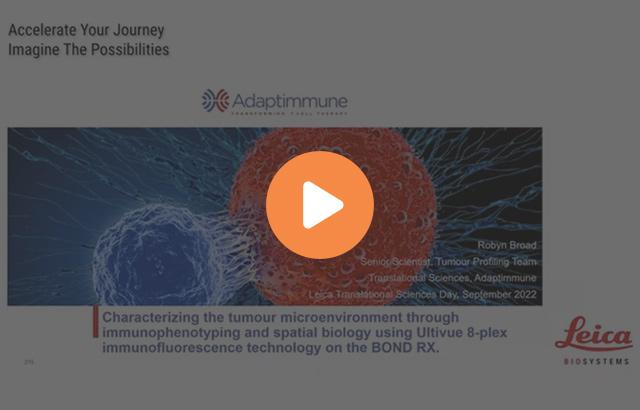
Strategies for Spatial Multi-omics: Co-detection of protein and RNA biomarkers on a single FFPE tissue section powered by InSituPlex® Technology


1. Background and Introduction:
Understanding the complexities of a particular tumor microenvironment can vastly improve the accuracy of immuno-oncology clinical prognosis and accelerate the discovery of immunotherapy targets towards patient-focused personalized medicine, as well as help researchers gain a more complete understanding of mechanisms of action and cellular phenotypes that may be promoting or hindering response. To this end, biomarker detection approaches capable of rapid identification, quantification, and spatial mapping of the many cell types of the tumor environment within FFPE tissue sections are becoming increasingly valuable for investigating the highly complex biology of tumor microenvironments.
Multiplexed immunofluorescence (mIF) approaches enable the detection of multiple protein targets with their spatial context in a single tissue sample, which in turn enables the identification of diverse cellular subtypes, shedding light on the phenotypic microenvironment of the tumor. Although many mIF staining methods exist, most require a long assay development time, provide limited information on small regions of heterogenous tissue samples or require specialized instrumentation and long imaging times. In contrast, the Ultivue® InSituPlex® (ISP) technology enables rapid, pre-optimized staining of multiple targets simultaneously in a single FFPE tissue section. Furthermore, Ultivue’s flexible portfolio of ISP-based kits, including FixVUE™ kits (formerly called UltiMapper) include ready-to-use panels with conventional manual and automated workflows for use with a variety of commercially available automated imaging systems. Additionally, ISP technology facilitates high-multiplex kits staining on single slides through sequential imaging of multiple targets, where up to four targets are imaged in one round, followed by gentle signal removal and application of a different set of probes for the next round of imaging.
In the field of spatial biology, phenotypic and transcriptomic analyses are evolving in parallel. However, to investigate complex cellular interactions, in-depth multi-omics analyses often require detecting several protein and RNA targets on a single tissue section. Co-detection of protein and RNA can also be valuable for contextualizing the tissue microenvironment by visualizing specific secretory proteins like cytokines. Additionally, co-detection of protein and RNA enables correlative analyses of different markers based on protein and RNA expression levels. Further, detecting RNAs for specific biomarkers can serve as a proxy for detecting proteins using antibodies when antibody use is unfeasible (e.g., when antibodies are not available, have suboptimal specificity, or have longer production timelines). Because FixVUE™ reagents efficiently preserve the tissue microenvironment throughout the entire assay workflow, ISP assays can be integrated with other spatial detection assays for combined protein and RNA detection.
In this white paper, we demonstrate the compatibility of ISP assays for protein detection with a commercially available RNAscope® assay (Advanced Cell Diagnostics, Inc.) for RNA detection. This study highlights the value of an integrated ISP-in situ hybridization (ISH) workflow for co-detection of protein and RNA targets on a single FFPE tissue section.
About the presenters

Gourab is currently leading Ultivue’s Product Strategy and Management. He is a Biomedical Researcher with extensive experience in assay/technology development for molecular pathology and diagnostics. Over the last seven years, he and his team have created groundbreaking advances in biomarker detection technologies to support translational researchers with an end-to-end solution that provides clinical-grade biological insights to validate clinical trial hypotheses.
He led key research efforts towards development and launch of Ultivue’s foundational InSituPlex® (ISP) assays and expanded its applications with OmniVUE™ and U-VUE® biomarker panels. Currently, he is leading strategic initiatives across Ultivue’s portfolios by combining its core technologies (InSituPlex® and STARVUE™) towards having a transformative impact on precision medicine.
Gourab holds a Ph.D. in Bioengineering from University of Washington Seattle where he developed novel DNA-based nanosystems that can perform molecular computation inside living cells.

Kirsty Maclean has 20 years of leadership experience addressing academic, biotech, clinical research organizations (CRO) and pharmaceutical industries through clinical/technical communication, sales support, and strategic market intelligence. Previously Kirsty held leadership roles in commercial development and scientific communications at CodexDNA, Defines (now part of AstraZeneca), Nanostring Technologies and ThermoFisher Scientific. Prior to industry, Kirsty spent 8 years as a post-doctoral researcher and staff scientist at St. Jude Children’s Research Hospital, and to date has over 35 peer reviewed publications and book chapters. She holds a PhD in Hematology and a BS (Hons) in Biochemistry.
Related Content
Die Inhalte des Knowledge Pathway von Leica Biosystems unterliegen den Nutzungsbedingungen der Website von Leica Biosystems, die hier eingesehen werden können: Rechtlicher Hinweis. Der Inhalt, einschließlich der Webinare, Schulungspräsentationen und ähnlicher Materialien, soll allgemeine Informationen zu bestimmten Themen liefern, die für medizinische Fachkräfte von Interesse sind. Er soll explizit nicht der medizinischen, behördlichen oder rechtlichen Beratung dienen und kann diese auch nicht ersetzen. Die Ansichten und Meinungen, die in Inhalten Dritter zum Ausdruck gebracht werden, spiegeln die persönlichen Auffassungen der Sprecher/Autoren wider und decken sich nicht notwendigerweise mit denen von Leica Biosystems, seinen Mitarbeitern oder Vertretern. Jegliche in den Inhalten enthaltene Links, die auf Quellen oder Inhalte Dritter verweisen, werden lediglich aus Gründen Ihrer Annehmlichkeit zur Verfügung gestellt.
Vor dem Gebrauch sollten die Produktinformationen, Beilagen und Bedienungsanleitungen der jeweiligen Medikamente und Geräte konsultiert werden.
Copyright © 2024 Leica Biosystems division of Leica Microsystems, Inc. and its Leica Biosystems affiliates. All rights reserved. LEICA and the Leica Logo are registered trademarks of Leica Microsystems IR GmbH.



